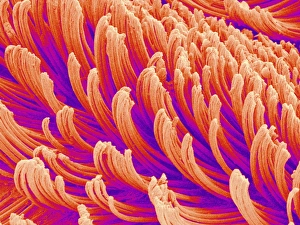Van Der Waals Force Collection
"Unseen Forces at Play: Exploring the Intricate World of van der Waals Force" In the realm of molecular interactions
All Professionally Made to Order for Quick Shipping
"Unseen Forces at Play: Exploring the Intricate World of van der Waals Force" In the realm of molecular interactions, a fascinating phenomenon known as van der Waals force emerges, binding ligands to receptor proteins with remarkable precision. As we delve into this microscopic view of ligand binding to a receptor protein, an intricate dance unfolds before our eyes. Graphite, with its unique molecular structure represented by models C016 / 8894, C016 / 8895, C016 / 8896, and C016 / 8893, serves as an excellent example of how van der Waals forces come into play. These weak yet significant attractions between atoms or molecules enable graphite's layers to stack together effortlessly while maintaining their distinct properties. But it doesn't stop there – nature has also harnessed the power of van der Waals forces in unexpected ways. Take geckos' toes for instance; these incredible creatures possess hairs on their toes that allow them to cling effortlessly onto surfaces. The underside of a gecko's toe reveals a mesmerizing network of tiny hairs acting as miniature hooks thanks to the interplay between van der Waals forces and surface tension. Just like graphite's layers or geckos' toes, even seemingly mundane substances like everyday graphite can captivate us when viewed through the lens of science, and is within these unassuming structures that we witness the delicate balance between attractive and repulsive forces governed by van der Waals interactions. So let us marvel at this hidden world where invisible bonds shape our reality – from microscopic ligand-receptor connections to extraordinary natural adaptations such as geckos defying gravity. Through understanding and appreciating these subtle but powerful forces at work in materials like graphite or living organisms alike, we gain insights into the fundamental principles governing our universe.









